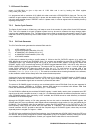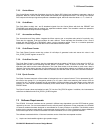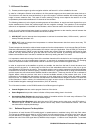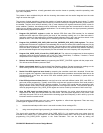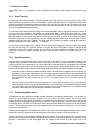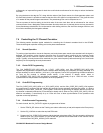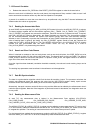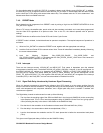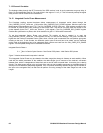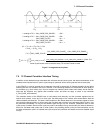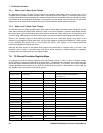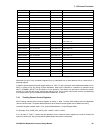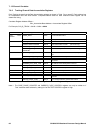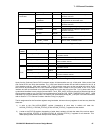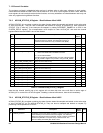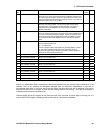7: 12-Channel Correlator
62 GP4020 GPS Baseband Processor Design Manual
The Analogue delay through the RF Front-end of the GPS receiver is set by such parameters as group delay in
filters. For the bandwidths used for C/A code will be in the region of 1 to 2 µs. This will normally swamp the digital
delay, but this can be measured and corrected for.
7.4.12 Integrated Carrier Phase Measurement
The Correlator tracking channel hardware allows measurement of integrated carrier phase through the
CHx_CARRIER_CYCLE_HIGH and _LOW and the CHx_CARRIER_DCO_PHASE registers, which are part of the
Measurement Data sampled at every TIC. The CHx_CARRIER_CYCLE_HIGH and _LOW registers contain the 20-
bit number of positive–going zero crossings of the Carrier DCO. This will be one more than the number of full
cycles elapsed (4-bits are in _HIGH and 16-bits in _LOW register). The CHx_CARRIER_DCO_PHASE register
contains the cycle fraction or phase, with 10-bit resolution to give 2π / 1024 radian increments.
To get the Integrated Carrier Phase over several TIC periods all that is needed is to read the
CHx_CARRIER_CYCLE_HIGH and _LOW registers at every TIC and sum the readings. This gives a number one
higher than the number of complete carrier cycles, when a carrier cycle is measured from one positive–going zero
crossing to the next. To this number, the fractional carrier cycle at the end has to be added, and the fractional
carrier cycle at the beginning has to be subtracted. Both numbers are read from the CHx_CARR_DCO_PHASE
register. The total phase change can be calculated as follows:
Integrated Carrier Phase =
2 π * ∑ No.s in Carrier Cycle Counter + final Carrier DCO phase - Initial Carrier DCO phase
Figure 7.4 below shows how this equation is derived.
This Integrated Carrier Phase may be related to the delta–range (the change in distance to each satellite). When
used with the orbital parameters of the satellites, the delta–ranges give a measure of the receiver’s movement
between fixes, which is independent of those fixes and so can be used to smooth them. It can also give a velocity
directly. The delta–ranges will be noisy and most of the value is due to satellite movement so the determination of
velocity must use data from adequately separated TICs. For position smoothing all delta–ranges may be included in
the input to the navigation filter, as that filter will perform a running average of the delta–ranges as well as the
ranges.



